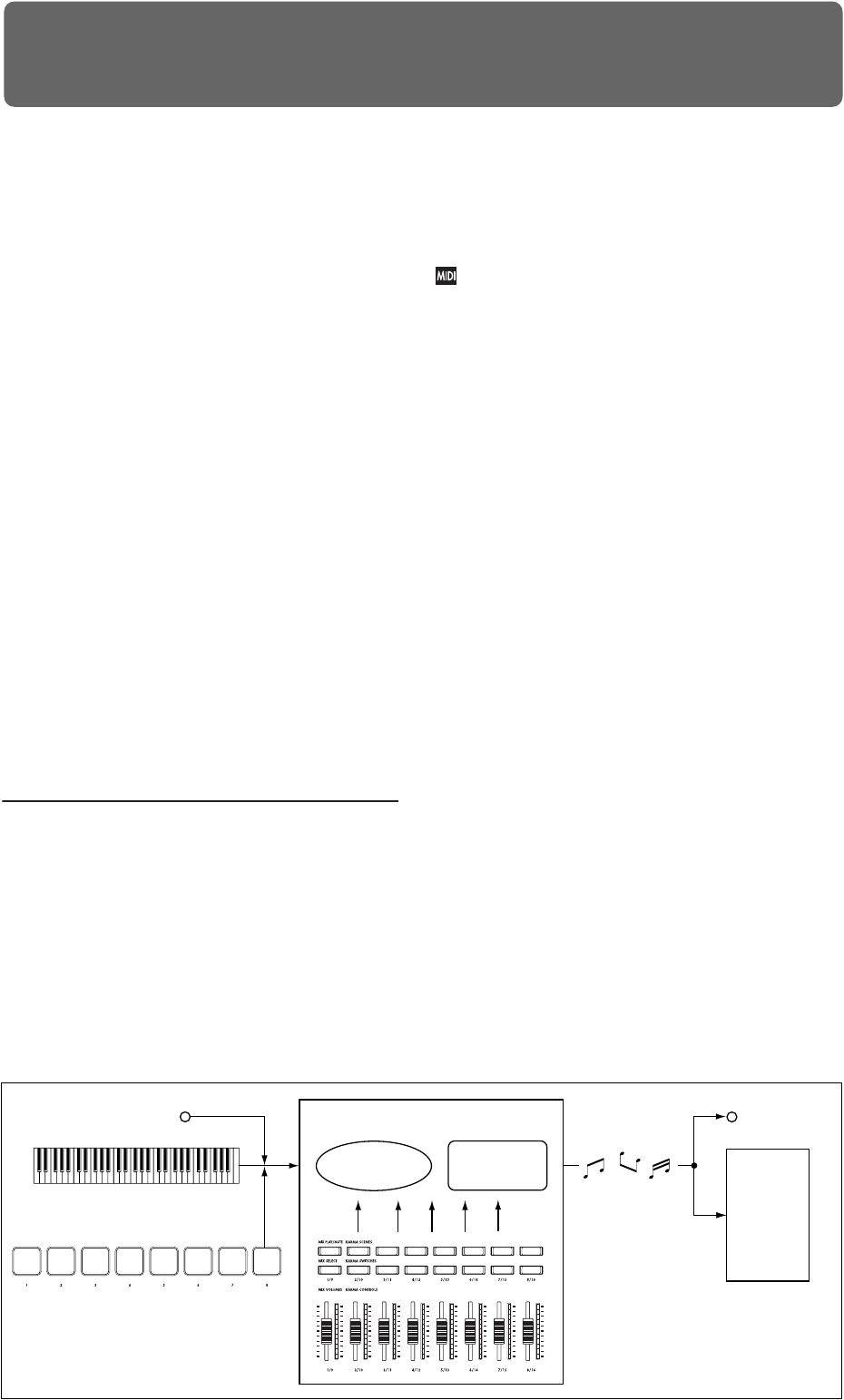
193
Using KARMA
Overview - What is KARMA?
KARMA stands for Kay Algorithmic Realtime Music
Architecture, named after its inventor, Stephen Kay.
The KARMA function generates MIDI data, using
many different algorithms seamlessly integrated to
provide a powerful “music generation engine.” Based
on the notes and chords you play, KARMA generates
phrases and patterns in real-time, generating not just
notes but MIDI control data as well. The KARMA
architecture allows the various algorithms to be
reconfigured and varied in realtime, as you play them.
For example, you can create the dynamic tempo
changes that occur within a harp glissando, the
synchronized changes in volume and tone that occur
as part of a brass phrase, the randomness within a
drum phrase, the crescendo and diminuendo of a fill-
in, changes in phrase or tone of a techno groove,
complex interweaving phrases that would be
impossible to play on a keyboard, guitar strumming
and finger-picking simulations with natural-sounding
changes, and backing grooves that follow your
keyboard playing in realtime – all under your control.
KARMA lets you produce phrases and patterns at a far
more musical and flexible level than conventional
arpeggiators or pattern playback functions.
On the OASYS, the KARMA function is designed to
work in close conjunction with the numerous other
functions, giving you unbelievable performance power
on stage or in the studio.
The structure of the KARMA function
The KARMA function consists of the following major
parts.
KARMA modules
A KARMA module uses a GE (Generated Effect) to
create a phrase or pattern.
In Program mode, only one KARMA module (A) is
used. In Combination or Sequencer modes, four
KARMA modules (A, B, C, D) can be used. For
example, each module might be used to generate
phrases and patterns for a separate sound, such as
drums, bass, guitar, and piano.
In Program mode, the KARMA module transmits
and receives all MIDI data on the Global MIDI
channel specified by “MIDI Channel.”
In Combination and Sequencer modes, the MIDI
data from each KARMA module is transmitted and
received on the “Input Channel” and “Output
Channel” specified for each module.
GE (Generated Effect)
The phrases and patterns produced by a KARMA
module are created by a GE (Generated Effect).
Based on note data from the keyboard, the GE uses
various internal parameters to control how the note
data will be developed, and how rhythm, chord
structure, and velocity etc. will be controlled to
generate a phrase or pattern. MIDI control changes and
pitch bend data can also be generated in
synchronization with the phrase or pattern. As a
capability unique to the OASYS, the KARMA function
can generate MIDI exclusive messages to control wave
sequencing, which switches between multisamples etc.
of a program in realtime. This lets you create phrases
and patterns in which the tone color and note pitches
change independently.
The OASYS provides a large number of GEs that can
be used for a variety of instruments, performance
techniques, and musical styles.
GE RTP – Real Time Parameters
A GE consists of over two hundred internal
parameters. In each GE, up to 32 of these internal
parameters are pre-selected as the most suitable
parameters for use in controlling the phrase or pattern.
These parameters are called the “GE realtime
parameters.”
Tone
generator
MIDI IN
KARMA function
GE
(Generated Effect)
KARMA module
parameters
MIDI OUT
Phrases or
patterns


















